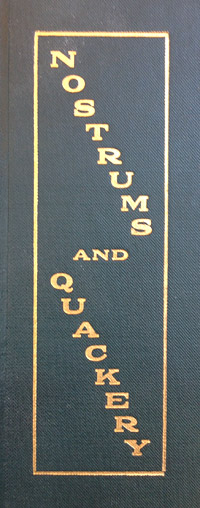This article was originally published at the defunct Insight blog at Skeptic.com on June 14, 2015. An archived version is available here.
“The American Medical Association is finally taking a stand on quacks like Dr. Oz,” announced a post yesterday by Julia Belluz. A health writer at Vox, Belluz has emerged as a sharp critic of popular medical talk show personality Dr. Mehmet Oz with posts such as this, this, and this. (I recommend her thoughtful reflection on the ethics, challenges, and public health concerns of countering medical misinformers, titled “How should journalists cover quacks like Dr. Oz or the Food Babe?” Generations of skeptical critics of quackery have asked those same troubling questions.)
Belluz cites an activist medical student named Benjamin Mazer, who reports on the outcome of a policy proposal recently brought before the American Medical Association’s (AMA) House of Delegates:
The delegates, who represent doctors throughout the country, voted to support the policy proposal as we wrote it. The AMA will now be taking the lead in crafting ethical and professional guidelines for physicians who wish to disseminate medical information in the media. The AMA will also write a report describing how physicians may be subject to discipline for violating medical ethics in the media. And finally, the AMA will be releasing a public statement reiterating our professional values and condemning doctors who use the media unethically. … Many of the leading experts in medical ethics are a part of the AMA. They will now go to work clarifying the nuances of “mass medicine” and will provide recommendations. No longer will quacks be able to benefit from a lack of specific standards and professional codes.

A detail from the cover of the second edition of Nostrums and Quackery (1912), from the American Medical Association. Browse the first edition online at Archive.org.
This anticipated statement and guidelines could be useful tools (and an important symbolic victory) for science-based medicine—and a very visible black eye for proponents of quackery. If so, the American Medical Association will be reviving a tradition that goes right to the roots of the venerable organization. (It is a tradition, INSIGHT blogger Jim Lippard points out below, that led to a serious legal defeats for the AMA in 1987 and 1990 in the case of Wilk v. AMA.)
In recent decades, the marketing concept of “complementary and alternative medicine” has gained tremendous traction, putting medical advocates and watchdogs in difficult positions. Should family doctors attempt to debunk patients’ unfounded but largely “harmless” pseudoscientific beliefs if doing so may drive those patients away from qualified medical attention? What are regulators to do when legislators wall off dubious supplements from their purview? From the halls of government to social media to daytime talk shows, our culture is simply saturated in pseudo-medical nonsense. It’s not surprising that the medical mainstream has long tended to leave the battle against quackery to scientific skepticism‘s specialized media and specialized critics—including, in the most recent period, skeptical bloggers. It’s easier, it’s simpler, and most doctors are too busy practicing medicine to bother becoming specialists in snake oil.
It was not always this way. Around 1911, the American Medical Association Press unleashed a punishing broadside barrage against medical fraud with their book Nostrums and Quackery (my copy is the 1912 second edition). Quackery and fraudulent patent medicines were denounced as “forces of evil”—forces with the clout and media savvy to hit back, rallying in the attempt to “discredit and bring into disrepute the American Medical Association…organized by those who are now or have in the past been in the ‘patent medicine’ business, ostensibly to preserve what has been miscalled ‘medical freedom.’”1 A preface to the second edition takes up the theme:
Quackery does not die easily. Exposures of the frauds perpetrated by quacks and nostrum venders do good only to the extent that such exposés educate the public. When the veil of mystery is torn from the medical faker, the naked sordidness and inherent worthlessness that remains suffices to make quackery its own greatest condemnation. This is the mission on which “Nostrums and Quackery” goes forth.2
Even a century ago, the AMA was all too aware of the unholy alliance between mass media and medical misinformation:
The consideration which has been accorded quacks and nostrum mongers by the daily press—thanks to their extensive advertising patronage—has led to a slight misapprehension in some quarters. Some misguided fakers have at times thought that they owned the press—that all they had to do was to crack the whip and watch the journalistic trick-dog jump through the hoop. In some cases the gentlemen afflicted with this obsession have been severely jarred back into the world of realties.3
References
- American Medical Association. Nostrums and Quackery, Second Edition. (Chicago: American Medical Association Press, 1912.) pp. 7–8
- Ibid. p. 11
- Ibid. p. 287